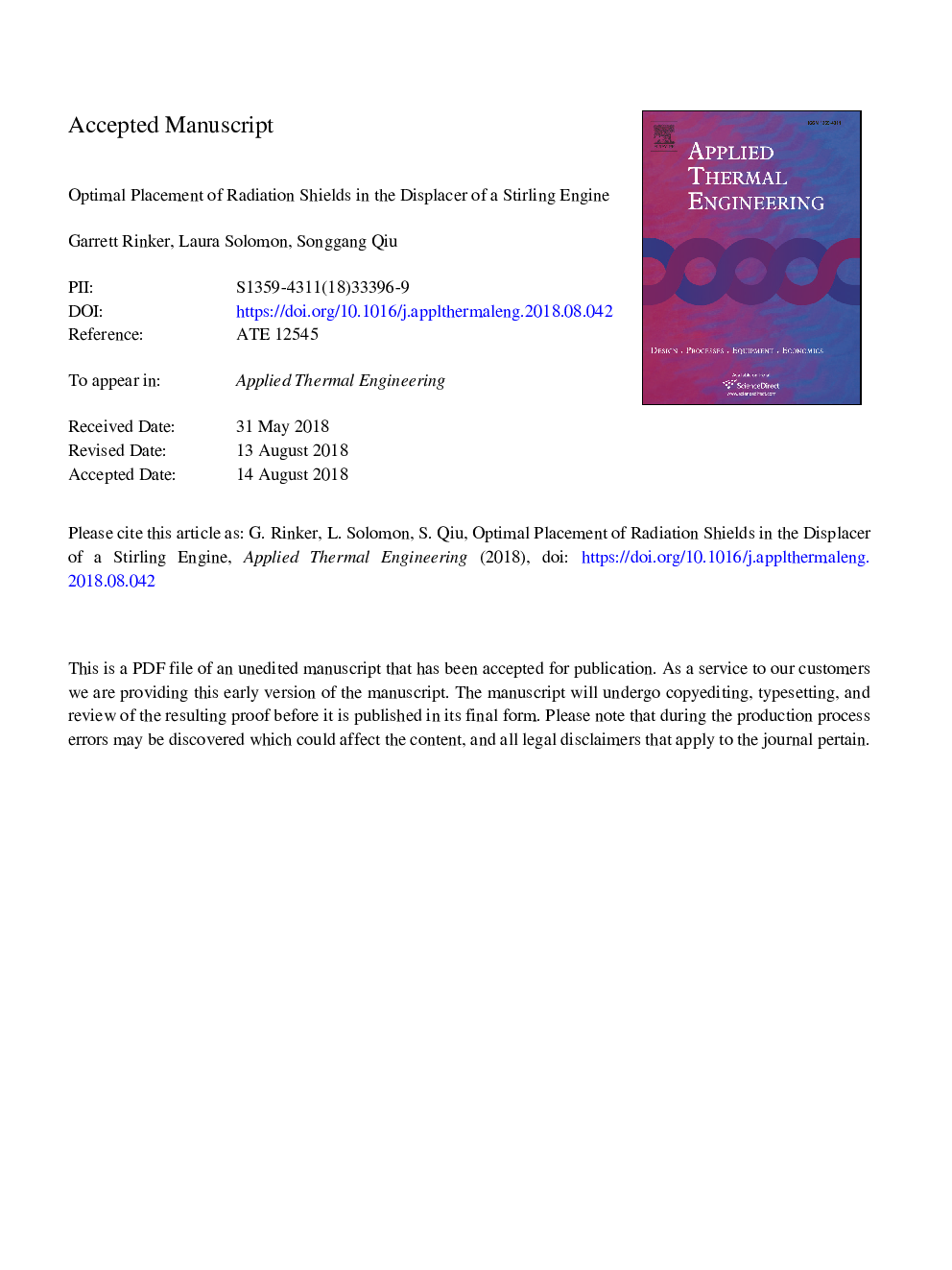| Article ID | Journal | Published Year | Pages | File Type |
|---|---|---|---|---|
| 8941916 | Applied Thermal Engineering | 2018 | 20 Pages |
Abstract
The implementation of radiation shields in the displacer assembly of a Stirling engine is an effective way to reduce heat transfer losses. A FEA approach with ANSYS Workbench was utilized to determine the steady-state temperature profile throughout a displacer assembly, as well as the heat transfer from the hot end to the cold end of the displacer to optimize the position of the radiation shields. The results show that the surface finish is a critical aspect of reducing radiation losses since the higher emissivity cases resulted in higher displacer body temperatures and total heat flux to displacer body compared to the lower emissivity cases with the same number of shields and positioning. Even a single shield is capable of significantly reducing the radiation losses present in the displacer. The results also suggest it is more effective to place the shields uniformly along the entire length of the displacer cap. The results also demonstrated that there exits an optimal number of radiation shields that has the lease heat losses.
Related Topics
Physical Sciences and Engineering
Chemical Engineering
Fluid Flow and Transfer Processes
Authors
Garrett Rinker, Laura Solomon, Songgang Qiu,
